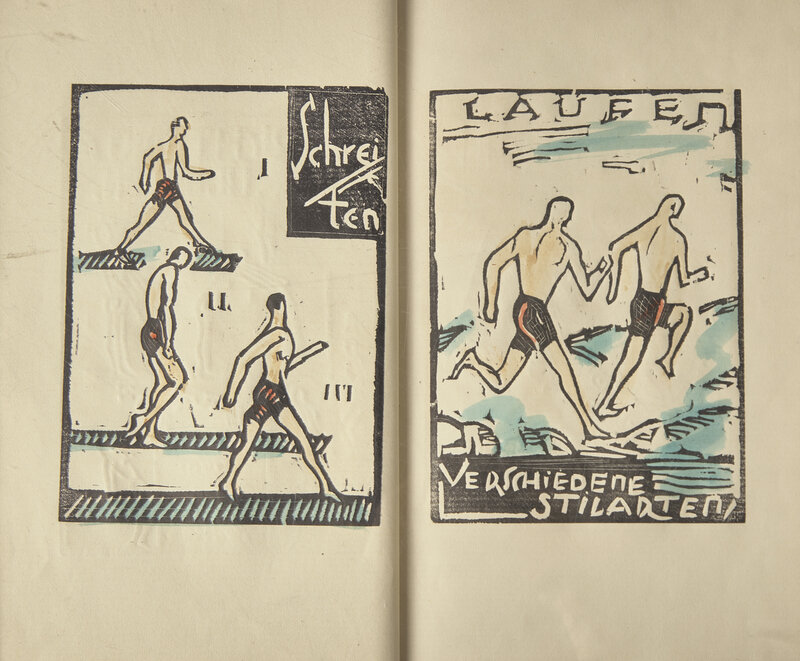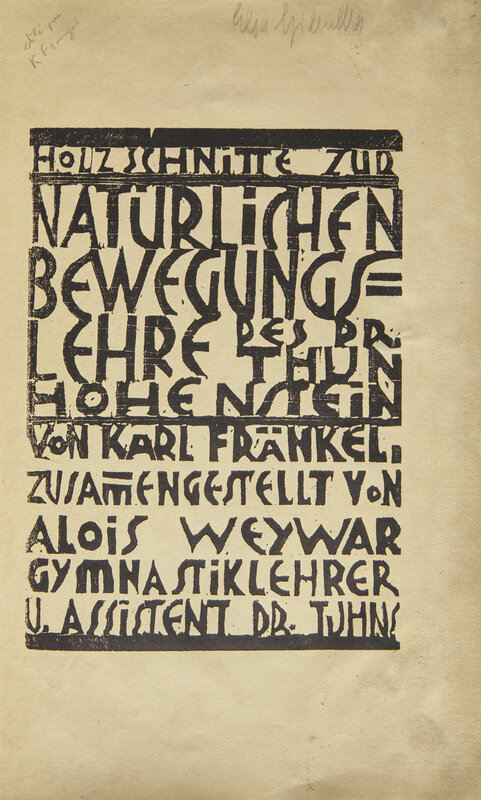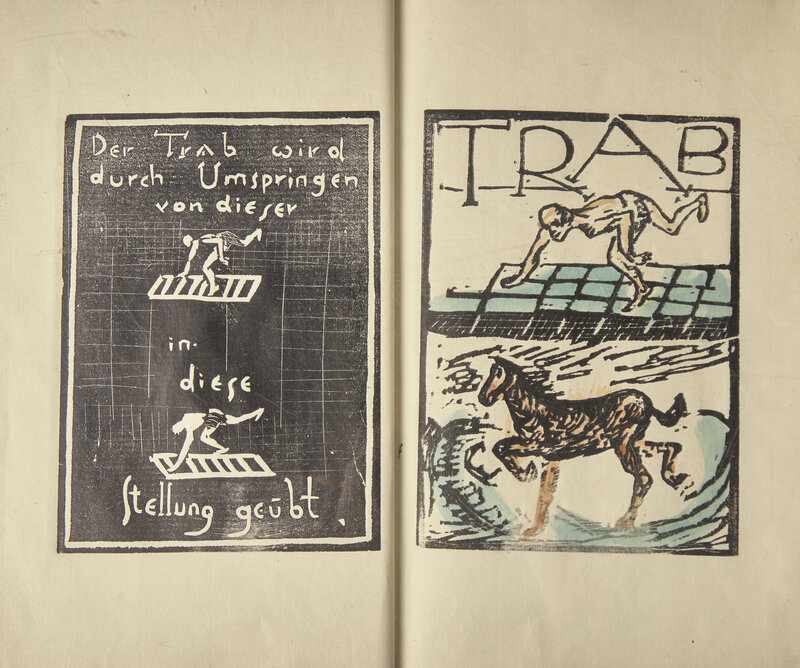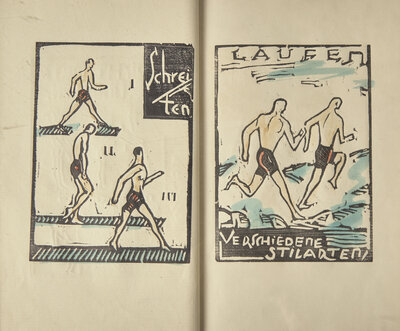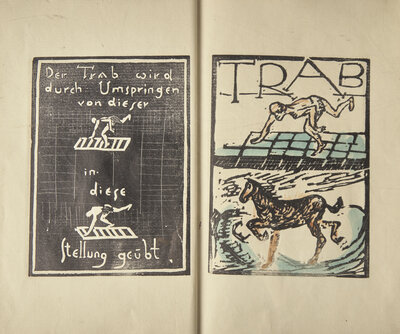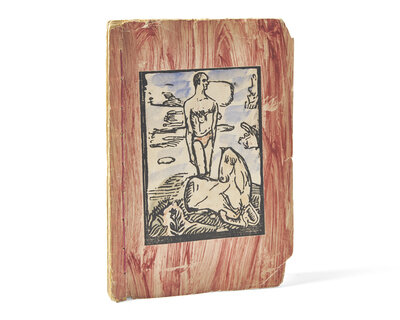Condition Report
Contact Information
Lot 105
Sale 2107 - Collections of an Only Child: Seventy Years a Bibliophile, the Library of Justin G. Schiller
Dec 5, 2024
10:00AM ET
Live / New York
Own a similar item?
Estimate
$4,000 -
6,000
Lot Description
[Fränkel, Karl] Thun-Hohenstein, Maximilian, and Alois Weywar, and Max Ermers. Holzschnitte zur Naturlichen Bewegungslehre des Dr. Thun Hohenstein...Zusammengestellt von Alois Weywar Gymnastiklehrer u. Assitent Dr. Tuhns
Vienna: (Privately Printed, ca. 1930). First and only edition. 4to. 16 unnumbered leaves. Completely printed in woodcut, including title-page, text, and 16 full-page hand-colored woodcuts. Original stab-sewn binding of red painted paste-paper boards, hand-colored woodcut mounted on front board, black and white woodcut imprint mounted on rear board, wear and chipping along extremities; in custom red paper board fall-down-back box with window and slip case. OCLC 84926364 and 1316715561
Extremely rare work on gymnastics and human locomotion, illustrating the ideals of "beauty through health and strength" (OCLC), first popularized during the early 20th-century by influential Danish athlete and gymnastic teacher, Joergen Peter Muller (1866-1938). Completely hand-printed in color and in black and white woodcuts by Austrian painter and graphic artist Karl Fränkel (1895-1964). The striking images illustrate exercises invented by Maximilian Thun-Hohenstein, a Viennese doctor remembered for his research into human locomotion. Edited by Dr. Thun-Hohenstein's assistant, Alois Weywar (1903-97), and with commentary by Austrian art historian Max Ermers (1881-1950), the text and images compare human movement to that of a horse and suggests various jumps, stretches and handstands to promote "harmony health, and beauty" (OCLC). The text comments on Hellenism and its links to the beneficial effects of exercise.
Karl Fränkel studied at Höhere Graphische Bundes-Lehr-und Versuchsanstalt in Vienna and at the Vienna Kunstgewerbeschule, where he developed an interest in graphic design and puppetry. In 1939, he was taken to the concentration camp at Dachau, where he was imprisoned until his exile to Great Britain. In 1945, he was able to return to Vienna.
One of possibly only five known copies. We can locate only this copy on RBH, while OCLC locates three copies--at Princeton University, Florida International University, and at the German Sport University Cologne. A further copy is located at the National Library of Austria.
This lot is located in Philadelphia.
